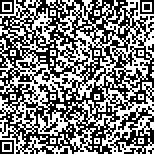| 引用本文: | 刘骏泓,高雅莉,梁翠绿,陈琪莹,陈明珠,张吟.胰高血糖素样肽-1受体激动剂对2型糖尿病患者肾保护作用的有效性和安全性评价[J].中国现代应用药学,2024,41(6):823-833. |
| LIU Junhong,GAO Yali,LIANG Cuilyu,CHEN Qiying,CHEN Mingzhu,ZHANG Yin.Efficacy and Safety Evaluation of Glucagon-like Peptide-1 Receptor Agonists for Renal Protection in Patients with Type 2 Diabetes[J].Chin J Mod Appl Pharm(中国现代应用药学),2024,41(6):823-833. |
|
| |
|
|
| 本文已被:浏览 1106次 下载 648次 |

码上扫一扫! |
|
|
| 胰高血糖素样肽-1受体激动剂对2型糖尿病患者肾保护作用的有效性和安全性评价 |
|
刘骏泓1,2, 高雅莉1, 梁翠绿1, 陈琪莹1, 陈明珠3, 张吟1
|
|
1.福建医科大学附属第二医院药学部,福建 泉州 362000;2.福建医科大学药学院,福州 350000;3.泉州医学高等专科学校,福建 泉州 362000
|
|
| 摘要: |
| 目的 系统评价胰高血糖素样肽-1受体激动剂(glucagon-like peptide-1 receptor agonists,GLP-1RA)对2型糖尿病(type 2 diabetes mellitus,T2DM)患者的肾保护作用的有效性和安全性,为临床提供循证依据。方法 计算机检索PubMed、Embase、The Cochrane Library、Clinical Trials.gov、CNKI、WanFang Data和VIP数据库,并手工检索追溯纳入文献的参考文献,收集单用GLP-1RA或者GLP-1RA联合其他常规药物(试验组),对比不加GLP-1RA或安慰剂的常规方法(对照组)治疗T2DM的随机对照试验(randomized controlled trials,RCTs),检索时限为建库至2022年1月30日。运用RevMan 5.4统计软件对纳入的资料进行meta分析。结果 共纳入7项研究,其中试验组7 985例,对照组6 633例。Meta分析结果显示,试验组显著降低肾脏复合终点事件发生率[Z=2.17,P=0.03,RR=0.79,95%CI(0.64,0.98)]、尿白蛋白/肌酐比[Z=11.66,P<0.00001,MD=–23.74,95%CI(–27.73,–19.74)]、新发大量蛋白尿发生率[Z=5.79,P<0.000 01,MD=0.76,95%CI(0.69,0.83)]、糖化血红蛋白[Z=12.76,P<0.00001,MD=–0.94,95%CI(–1.09,–0.80)]和估算肾小球滤过率[P=0.0007,Z=3.39,MD=–7.37,95%CI(–11.63,–3.10)],差异均有统计学意义;有1项研究表明试验组显著降低24 h尿白蛋白排泄率;但在2组间急性肾衰竭发生率[Z=0.63,P=0.53,MD=1.13,95%CI(0.78,1.63)]方面无统计学差异。安全性方面,除低血糖发生率没有统计学差异外,试验组在腹泻、恶心、呕吐以及食欲下降的不良反应发生率均高于对照组,差异具有统计学意义。结论 现有的研究证据表明,GLP-1RA常见的不良反应为胃肠道反应且可耐受。与安慰剂或不使用GLP-1RA的常规治疗相比,GLP-1RA对T2DM患者可能具有一定的肾保护作用,该结论尚需大量的RCTs进一步验证。 |
| 关键词: 胰高血糖素样肽-1受体激动剂 2型糖尿病 肾保护 meta分析 安全性评价 随机对照试验 |
| DOI:10.13748/j.cnki.issn1007-7693.20224091 |
| 分类号:R969.4 |
| 基金项目:福建省卫生健康软科学项目(2022RKA012);泉州市高层次人才项目(2022C029R) |
|
| Efficacy and Safety Evaluation of Glucagon-like Peptide-1 Receptor Agonists for Renal Protection in Patients with Type 2 Diabetes |
|
LIU Junhong1,2, GAO Yali1, LIANG Cuilyu1, CHEN Qiying1, CHEN Mingzhu3, ZHANG Yin1
|
|
1.Department of Pharmacy, The Second Affiliated Hospital of Fujian Medical University, Quanzhou 362000, China;2.Department of Pharmacy, Fujian Medical University, Fuzhou 350000, China;3.Quanzhou Medical College, Quanzhou 362000, China
|
| Abstract: |
| OBJECTIVE To systematically evaluate the efficacy and safety of glucagon-like peptide-1 receptor agonists(GLP-1RA) in the renal protection of type 2 diabetes(T2DM) patients, and provide evidence for clinic. METHODS Computer retrieval of PubMed, Embase, The Cochrane Library, Clinical Trials.gov, CNKI, WanFang Data and VIP databases, and manual retrieval of the included references. Randomized controlled trials(RCTs) for T2DM using GLP-1RA alone or GLP-1RA in combination with other conventional agents(experimental group) versus conventional treatment without GLP-1RA or placebo(control group). The search period spanned from the establishment of the database to January 30, 2022. Meta-analysis of the included data was performed using RevMan 5.4 statistical software. RESULTS A total of 7 studies were included, including 7 985 cases in experimental group and 6 633 cases in control group. Meta-analysis showed that the experimental group significantly reduced the incidence of renal complex endpoint events[Z=2.17, P=0.03, RR=0.79, 95%CI(0.64, 0.98)], urinary albumin creatinine ratio[Z=11.66, P<0.00001, MD=–23.74, 95%CI(–27.73, –19.74)], incidence of new macroalbuminuria[Z=5.79, P<0.000 01, MD=0.76, 95%CI(0.69, 0.83)], hemoglobin A1c[Z=12.76, P<0.000 01, MD=–0.94, 95%CI(–1.09, –0.80)] and estimated glomerular filtration rate[P=0.0007, Z=3.39, MD=–7.37, 95%CI(–11.63, –3.10)], the differences were statistically significant. One study showed that the experimental group could significantly reduce 24-hour urinary albumin excretion rate. However, there was no significant difference in the incidence of acute renal failure between the two groups[Z=0.63, P=0.53, MD=1.13, 95%CI(0.78, 1.63)]. In terms of safety, except the incidence of hypoglycemia, the incidence of adverse reactions in the experimental group was higher than that in the control group, including diarrhea, nausea, vomiting and loss of appetite, with statistically significant differences. CONCLUSION Existing research evidence shows that the common adverse reactions of GLP-1RA are gastrointestinal reactions and can be tolerated. Compared with placebo or conventional treatment without GLP-1RA, GLP-1RA may have a protective effect on the kidney of T2DM patients, and this conclusion needs to be further verified by RCTs. |
| Key words: glucagon-like peptide-1 receptor agonist type 2 diabetes mellitus renal protection meta-analysis safety evaluation randomized controlled trial |
|
|
|
|
